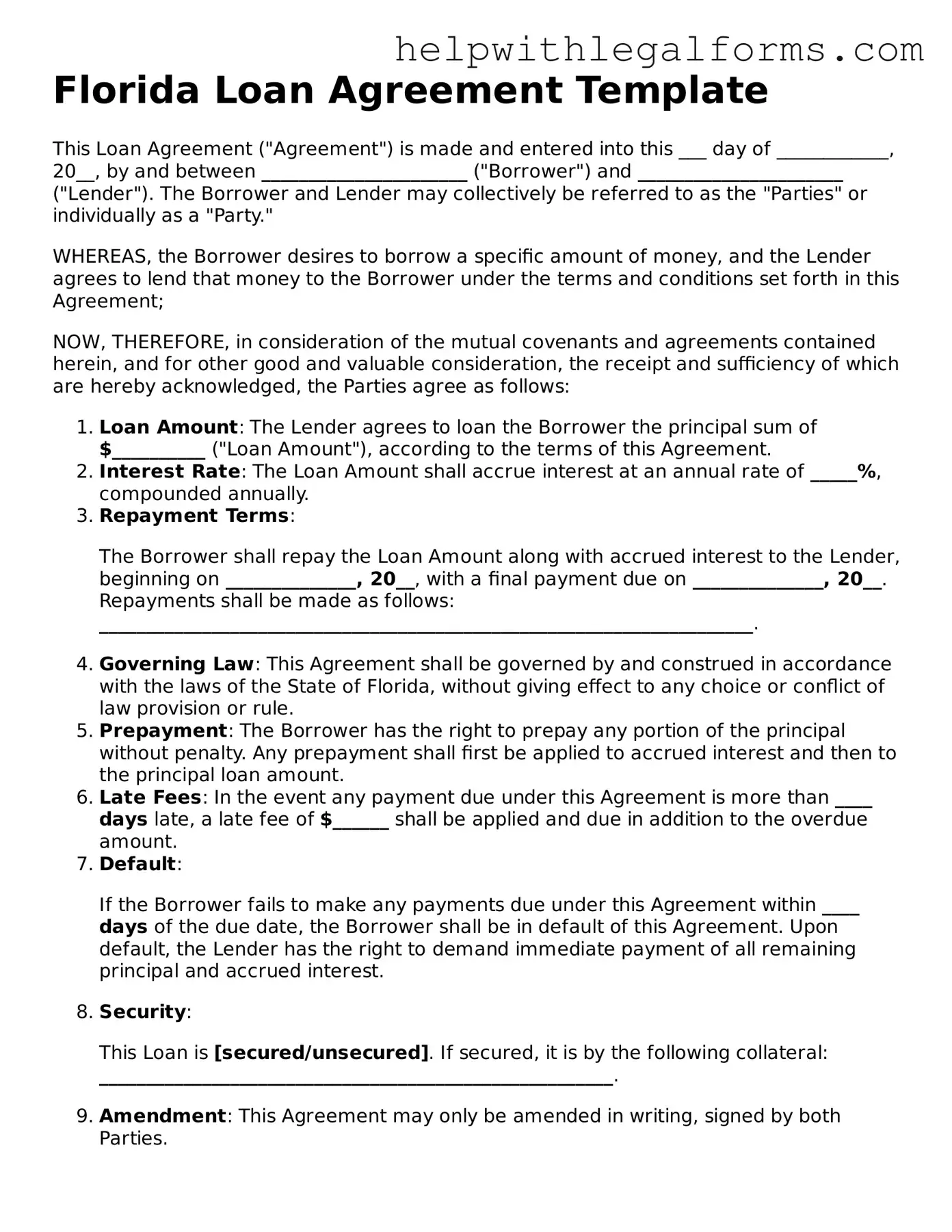Florida Loan Agreement Template
This Loan Agreement ("Agreement") is made and entered into this ___ day of ____________, 20__, by and between ______________________ ("Borrower") and ______________________ ("Lender"). The Borrower and Lender may collectively be referred to as the "Parties" or individually as a "Party."
WHEREAS, the Borrower desires to borrow a specific amount of money, and the Lender agrees to lend that money to the Borrower under the terms and conditions set forth in this Agreement;
NOW, THEREFORE, in consideration of the mutual covenants and agreements contained herein, and for other good and valuable consideration, the receipt and sufficiency of which are hereby acknowledged, the Parties agree as follows:
- Loan Amount: The Lender agrees to loan the Borrower the principal sum of $__________ ("Loan Amount"), according to the terms of this Agreement.
- Interest Rate: The Loan Amount shall accrue interest at an annual rate of _____%, compounded annually.
- Repayment Terms:
The Borrower shall repay the Loan Amount along with accrued interest to the Lender, beginning on ______________, 20__, with a final payment due on ______________, 20__. Repayments shall be made as follows: ______________________________________________________________________.
- Governing Law: This Agreement shall be governed by and construed in accordance with the laws of the State of Florida, without giving effect to any choice or conflict of law provision or rule.
- Prepayment: The Borrower has the right to prepay any portion of the principal without penalty. Any prepayment shall first be applied to accrued interest and then to the principal loan amount.
- Late Fees: In the event any payment due under this Agreement is more than ____ days late, a late fee of $______ shall be applied and due in addition to the overdue amount.
- Default:
If the Borrower fails to make any payments due under this Agreement within ____ days of the due date, the Borrower shall be in default of this Agreement. Upon default, the Lender has the right to demand immediate payment of all remaining principal and accrued interest.
- Security:
This Loan is [secured/unsecured]. If secured, it is by the following collateral: _______________________________________________________.
- Amendment: This Agreement may only be amended in writing, signed by both Parties.
- Notices: Any notices or communications required or permitted to be given by this Agreement shall be in writing and given by personal delivery or certified mail, return receipt requested, at the addresses specified by the Parties.
- Entire Agreement: This Agreement constitutes the entire agreement between the Parties concerning the subject matter hereof and supersedes all prior agreements and understandings, whether written or oral.
IN WITNESS WHEREOF, the Parties have executed this Agreement as of the date first above written.
Lender Signature: ____________________________________
Lender Printed Name: ___________________________________
Date: _________________________________________________
Borrower Signature: ___________________________________
Borrower Printed Name: __________________________________
Date: _________________________________________________
